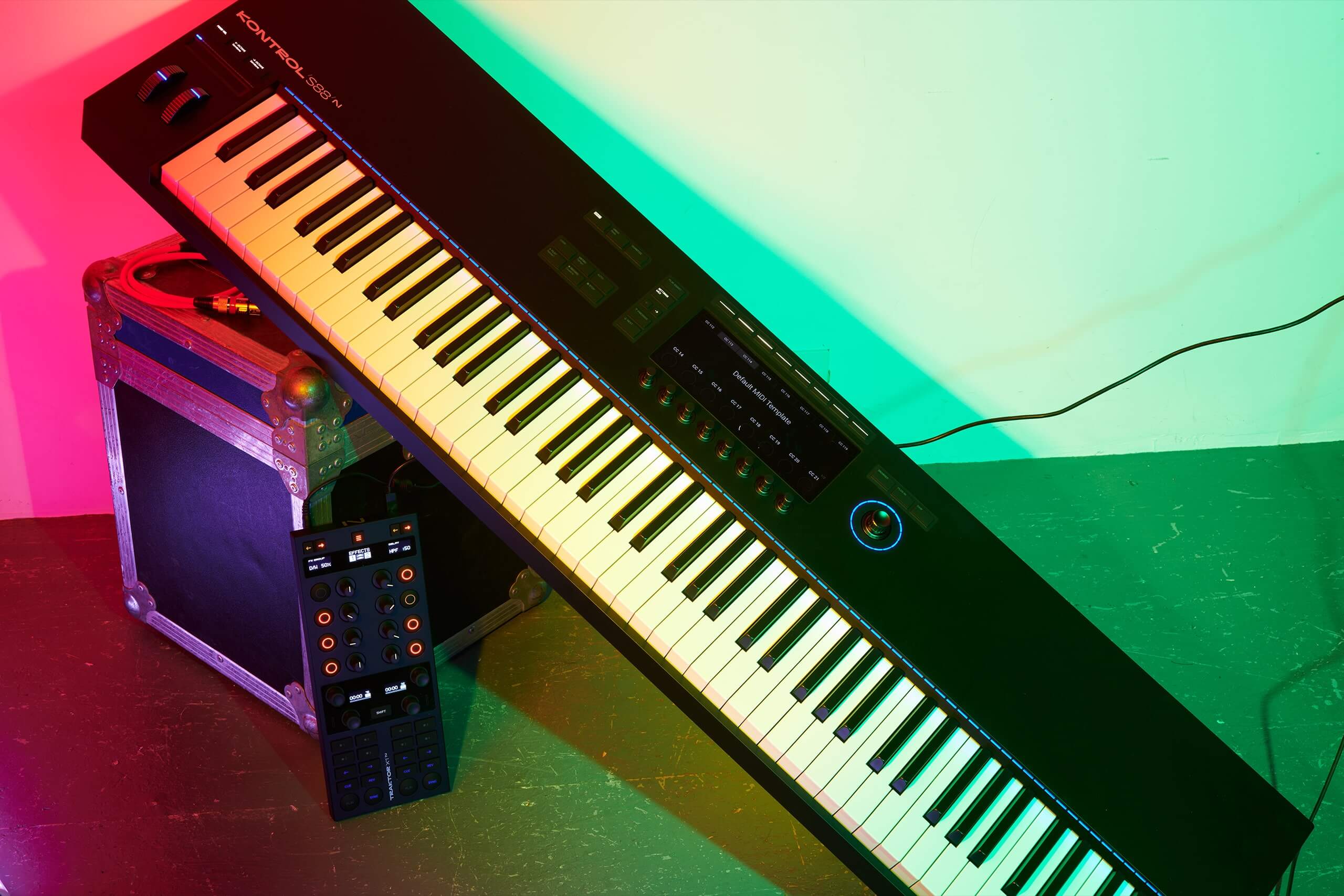
Native Instruments: “We had to modernise our architecture… We’re now more aligned in new ways to integrate our hardware and software”
With complete control over the software and hardware, NI has reimagined its flagship controllers for a new decade, putting you firmly in the driving seat.
Native Instruments Kontrol S88 and Traktor X1 | Credit: Simon Vinall
Native Instruments occupies a unique position in the music technology world. The Berlin-based brand’s remarkable catalogue of software instruments, Kontakt architecture – upon which countless instruments are built – and its hardware manufacturing prowess command every part of the music-making experience. So when the company introduces major updates to its controllers, such as the new Kontrol S keyboards and Traktor X1 Mk3, you can bet they’re going to be a big deal.
“The first problem to solve”, says Christopher LaPietra, lead product manager for Kontrol and veteran of the Maschine Mikro Mk3 and Maschine+ releases, “was that while the Mk1 and 2 versions of Kontrol were good, we didn’t feel like users were getting an immersive experience. They didn’t feel like they were controlling a real instrument.
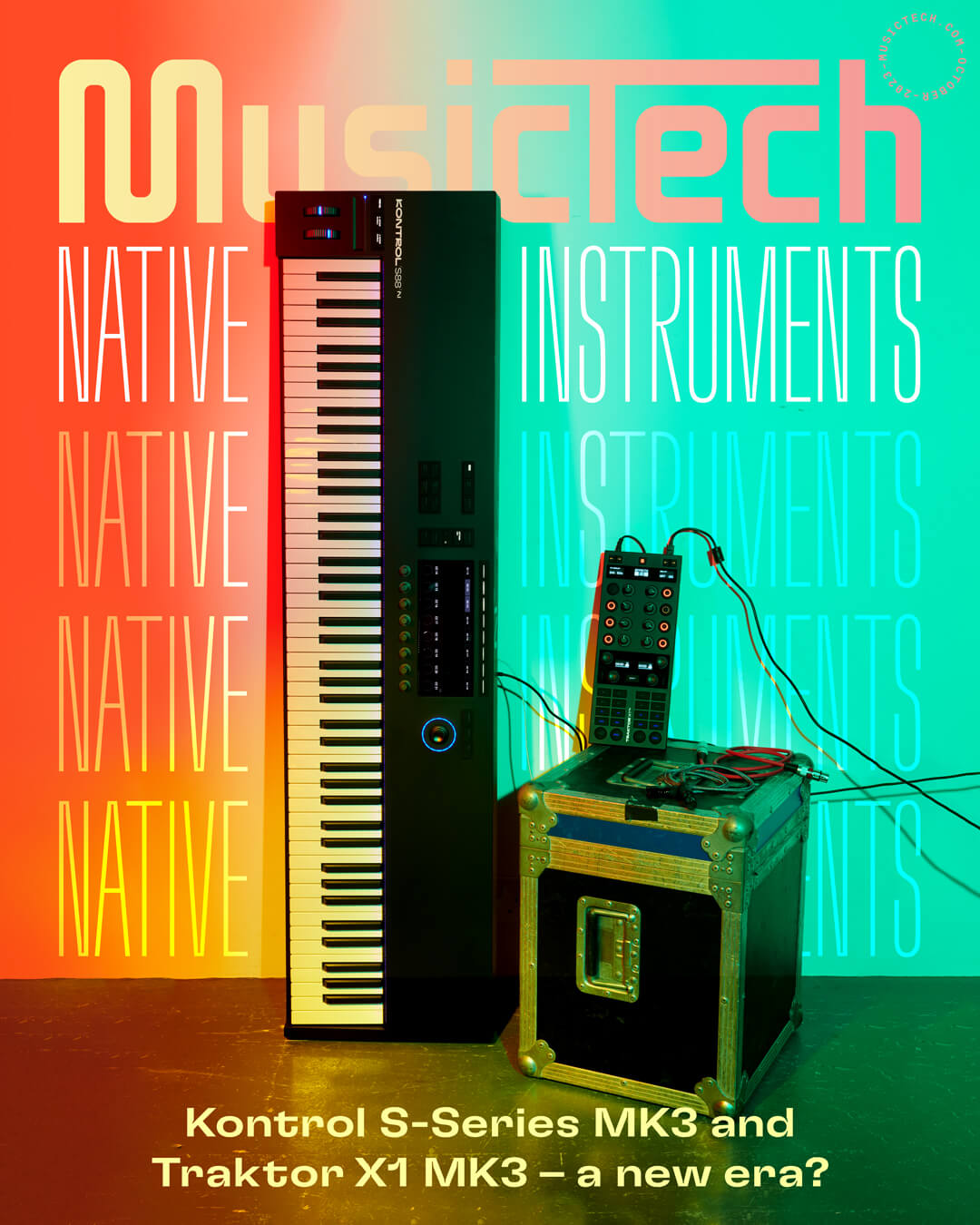
“Our competitive advantage is that we have a direct line into all the instruments via Kontakt. So there’s no reason we can’t create a nice immersive experience.” An upgrade to the Kontrol hardware was one of the key ways they achieved this, he continues. “The way that we solve that is with the big display and the evolution of the NKS standard [which enables deep communication between hardware and software]. So then it really does feel, with the navigation paradigms that we’ve introduced with NKS, that the experience of playing an instrument is more authentic”.
The desire to upgrade and enhance the Kontrol platform was also driven by the increasing complexity of modern software instruments. Chris explains, “The number of Kontakt instruments has grown substantially from 2017 to 2023. There are more expressive products out there and we wanted users to be able to access all those parameters.” This requires some work on the part of third-party developers too, who define what their instruments will look like on the new Kontrol S keyboards.
In addition to some clever software design, the answer lay in implementing a new creative layer in the Fatar keybeds. The team spent a lot of time designing a polyphonic aftertouch system for all three new keyboards, with the 88 key model being the first widely available hammer action model to feature the tech.
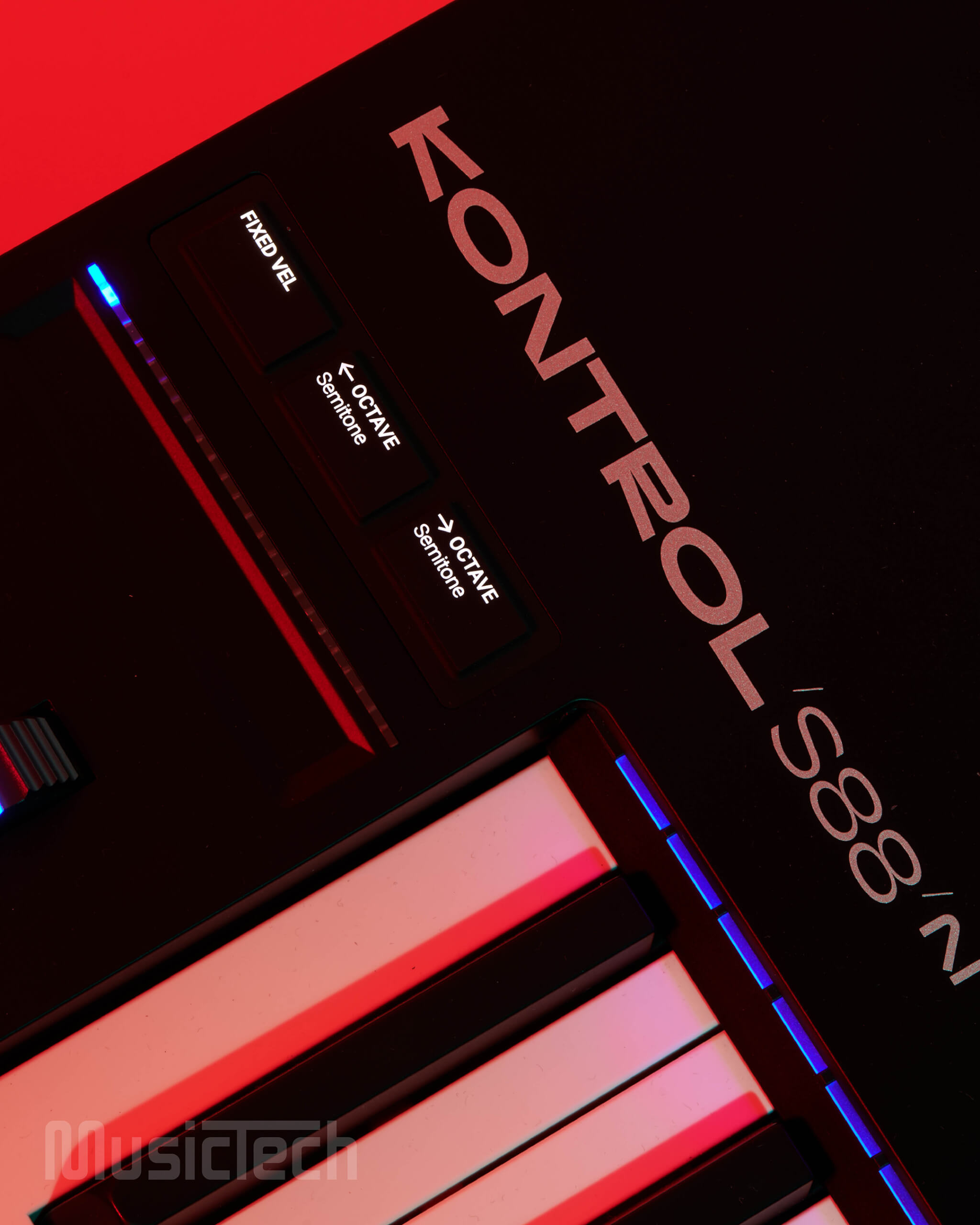
At its simplest, polyphonic aftertouch lets you control parameters using the pressure of your touch on every note independently. This enables supreme expression, not just for regular playing, but for composers and sound designers too. As Chris says, “If you’re a composer and you want to go a little bit deeper, you can use polyphonic aftertouch feature to get those additional modulations like cutoff or vibrato into your sound. It’s quite special and it’s very accessible. The tech has existed for a while but it’s been limited to a few very niche synths. We’re bringing it to a much wider audience”.
Those familiar with the Komplete Kontrol series will recognise features like the Light Guide, touch strip and DAW control section. But many elements have been refined or relocated based on extensive user feedback on better ergonomics.
There’s more inside too, as Chris reveals. “We now have a small embedded computer running on the device that deals with things like rendering the big colour display and achieving fast refresh rates. It also powers the smart play assistant, scale mode, arpeggiator…
“We had to modernise our architecture. We knew people were using the MK1 and 2 in MIDI mode but there were barriers; you had to be running instances of the Komplete Kontrol software to make it happen, for example. If you were running ten instances of Kontakt you needed ten instances of Komplete Kontrol and that’s heavy on the CPU. Now, you get direct access to MIDI mode and that’s something we’ll be expanding with software updates in the near future.”
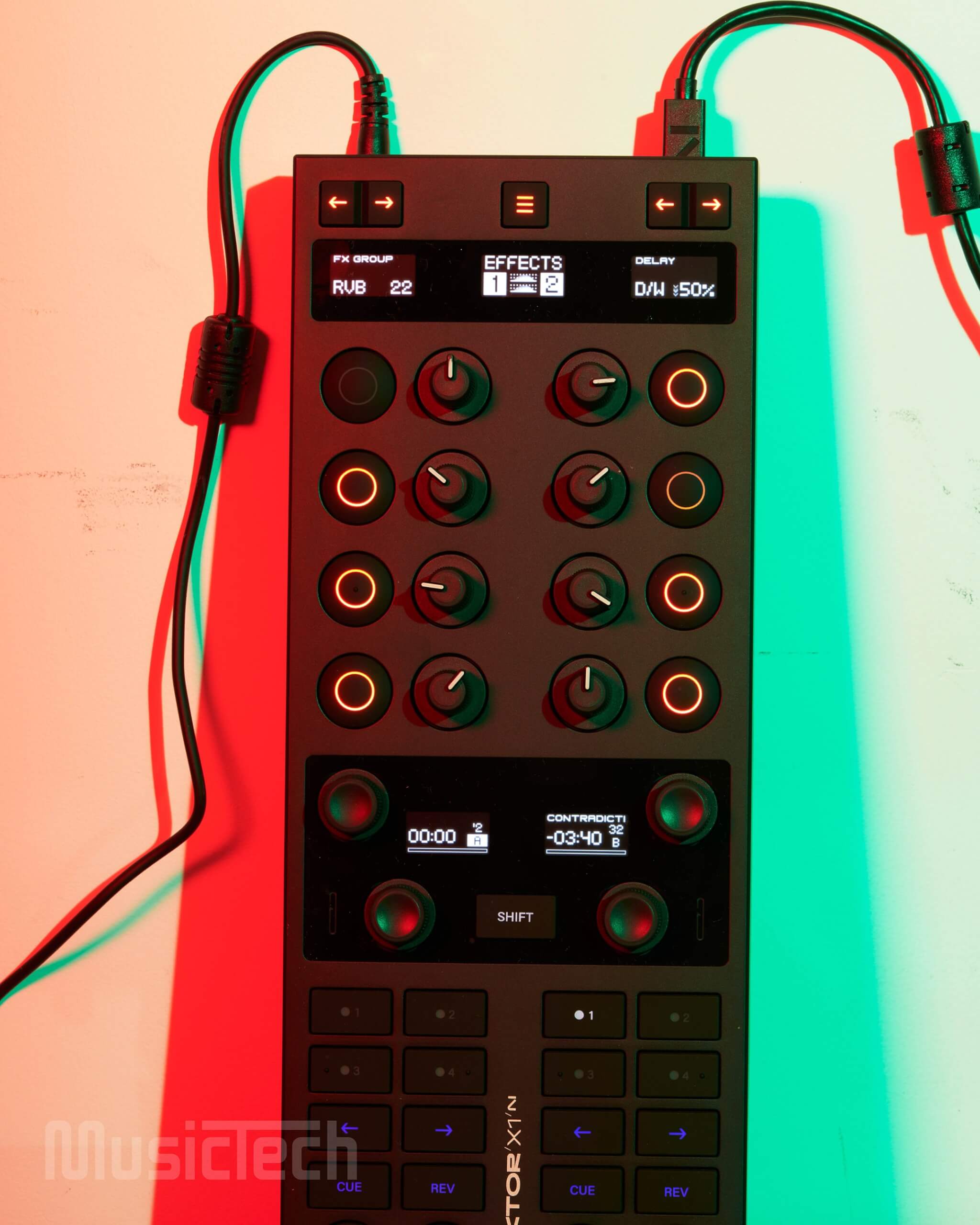
The team went even further in making the hardware the centrepiece of your studio, with four assignable TRS pedal inputs, MIDI in and out USB-C power to cut down on clutter. Chris also notes that, when developing hardware and software for NI’s studio products, there’s been some alignment with the Maschine team.
“The interesting part of our strategy is we were starting to see the synergy between the two product lines. Back then, we were two different divisions but the two products shared a lot of architecture. They shared a lot of modules, and they were also released at the same time with a lot of the same hardware components from a tech stack perspective; same displays, and methods of doing things.
“We’re now more aligned as one big team working on everything all together, with one tech stack in mind from a hardware and a software perspective. It’s becoming more efficient and we’re seeing ways that we can leverage the benefits across the portfolio of products.”
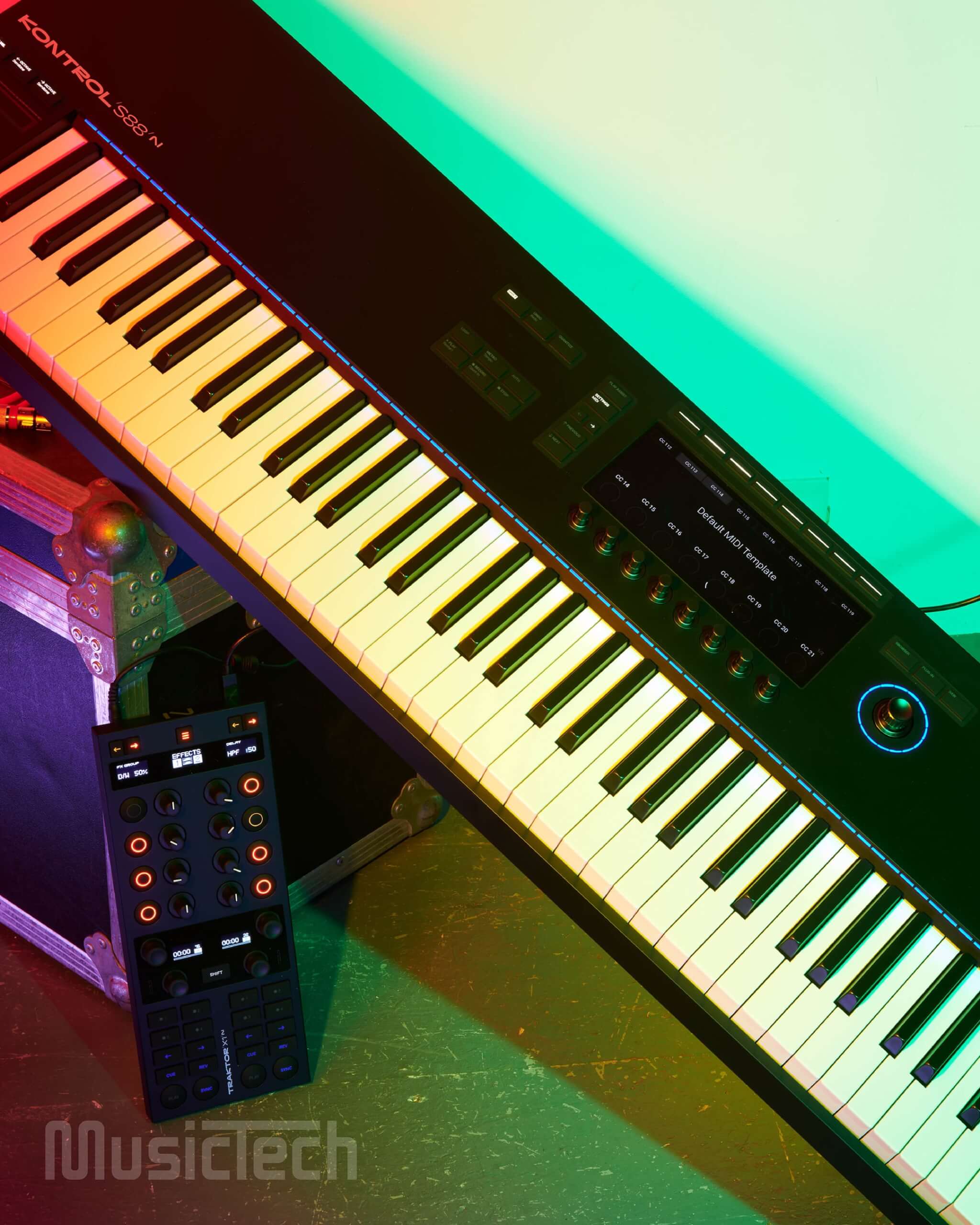
However, the two product families are unlikely to be unified any time soon – at least not that Chris could reveal. “No, we’re not going to blend the products. We’ll continue to invest and create value for each of the pillars. It’s more of an efficiency thing; we’re working in a focused manner and also with a well-thought-out architecture which means we can move quicker. In the past, it’s been very difficult because there was a siloed approach – it was very hard to converge. I would say we’re not going to blend the products because each has its loyal followings and use cases.”
It’s not just the company’s keyboard hardware that’s been given a serious upgrade. The Traktor X1 controller has also been redesigned, too. The new X1 Mk3 is a portable Traktor DJ controller with a whole bunch of new features. Designer Michael Koczynski was involved in creating the X1 Mk1 and Mk2 and is now the product lead for Traktor hardware. Again, the upgrade was based on feedback from a wide range of users, as Michael explains.
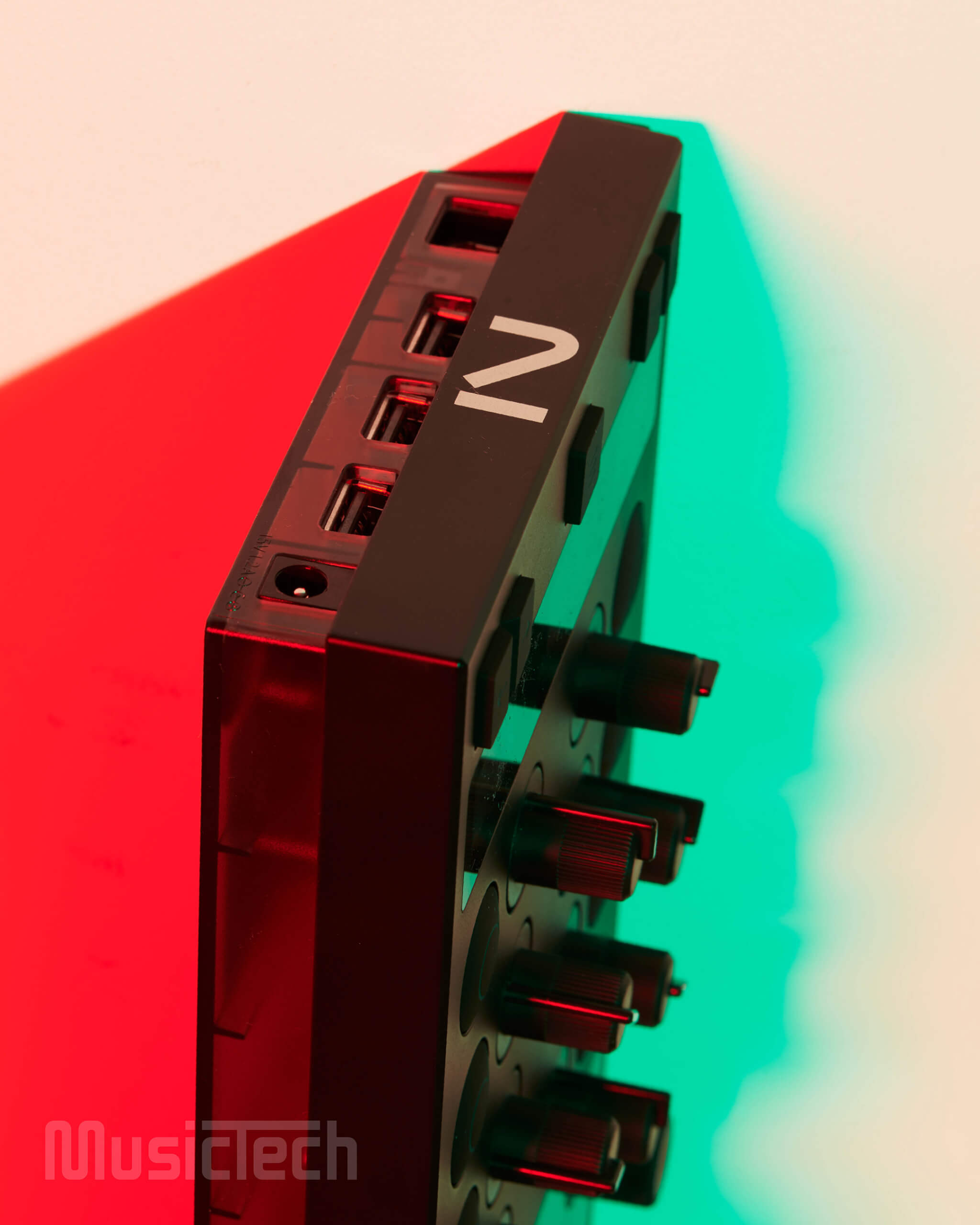
“We have a massive user base of X1 users; it’s one of our most successful product lines. So we basically had a lot of people that we could approach. We did interviews with our regular user base and recruited some through surveys and then reached out to them and had one-on-one interviews with them trying to find out how they use the hardware.
“Then we did the same thing with some of our hardcore users, most of whom are artists. So they also have different requirements, right? Because they’re travelling with this unit a lot. They’re throwing it into their bag more often than a regular user would. And we worked together with the VIP (visually impaired person) experience from the UK so we had some interviews with visually impaired DJs as well, trying to understand what the challenges are for them in a nightclub environment. We wanted to basically bring the best of the Mk1 and the best of the MK2 together.”
This extensive feedback revealed some key areas in which the company could enhance things for all its DJ users. Michael continues, “We basically married all the kinds of feedback together, so we dropped the touch strip and used that space to introduce an additional row of buttons. We also learned that people don’t really like to use the shift button. I mean, who likes to use the shift button, right? So introducing four extra buttons eliminated the need to use shift for any performance-critical functions. We also increased the button size in general so that you don’t accidentally trigger the wrong button because everything is too cramped together.
“From the Mk2, we knew that the typical X1 user loves to customise their mapping. They want to replace a function of one button with something else that they desperately need for their custom setup. And the X1 Mk1 had four encoders – two for browsing and two for looping. And on the MK2, we merged the two for browsing into one central piece.
“And, of course, that broke a lot of people’s custom mappings, so we decided to go back to give everybody the four encoders back so that you have basically full customisation there again.”
To help visually impaired users, and also users more generally, they added an RGB LED underneath each of the buttons. “So even if you can’t read the play label, you now at least will be able to say, I want to colour my Play button green and I want to colour my Cue button orang.
“You can easily customise your controller without having to go to what I call Traktor University because there is a very deep way of customising your controllers in Traktor. You can actually do whatever you want – you can program multiple functions onto one button and things like that, but it’s kind of complicated and not very accessible to most users. And this is basically why we also introduced this easy customisation page for the X1, where people can just select which functions they want to have on a button and which colour they want to give that particular button.”
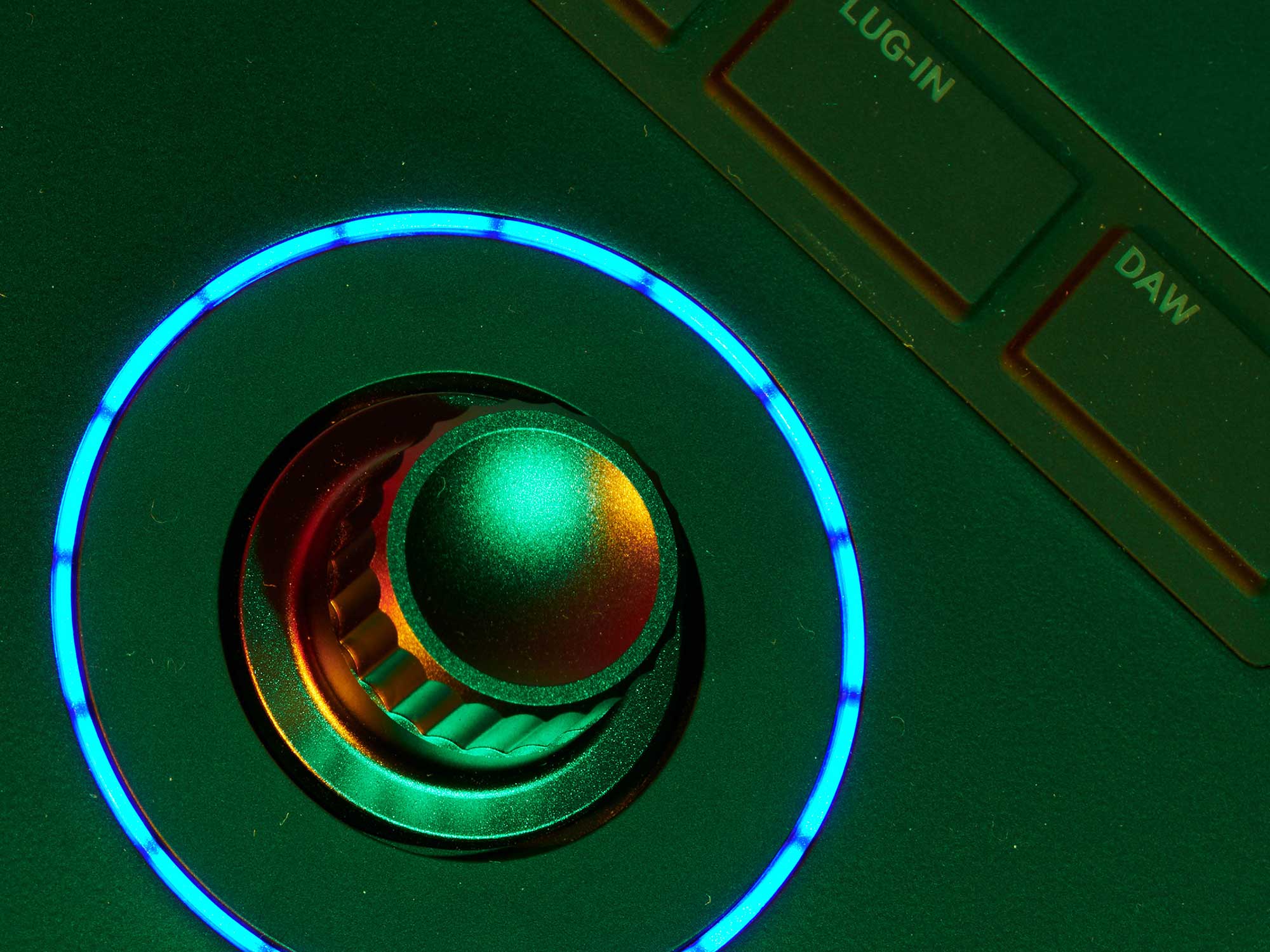
The design changes extend to a striking transparent shell on the underside of the unit that look smart in a darkened club but also provides visual cues – like flashing red when a track is about to end, or green when a loop is set. Michael explains, “In the beginning, it started as just being eye candy; you get this Philips Hue-style, indirect kind of lighting from the bottom of the unit.
“But the more we talked with users about it, people instantly asked, ‘Okay, can I have my VU meters on there? Can I have some indicators on there?’ So we decided to give it a little bit of functionality as well. Because [in a DJ set], you can very easily have a seven-minute track that doesn’t change much. It can easily happen where you’re just looping the first 30 seconds of it and you don’t notice it for five minutes.”
Michael is also proud of the wide range of users that the X1 series attracts and sees the newest model as expanding its appeal even further. “The target user is actually a very big range. Initially, when the X1 was designed, it was designed as an add-on controller for users. Like for people that are using our Scratch TimeCode vinyl, which was a big thing back then – I mean the X1 came out in 2010.
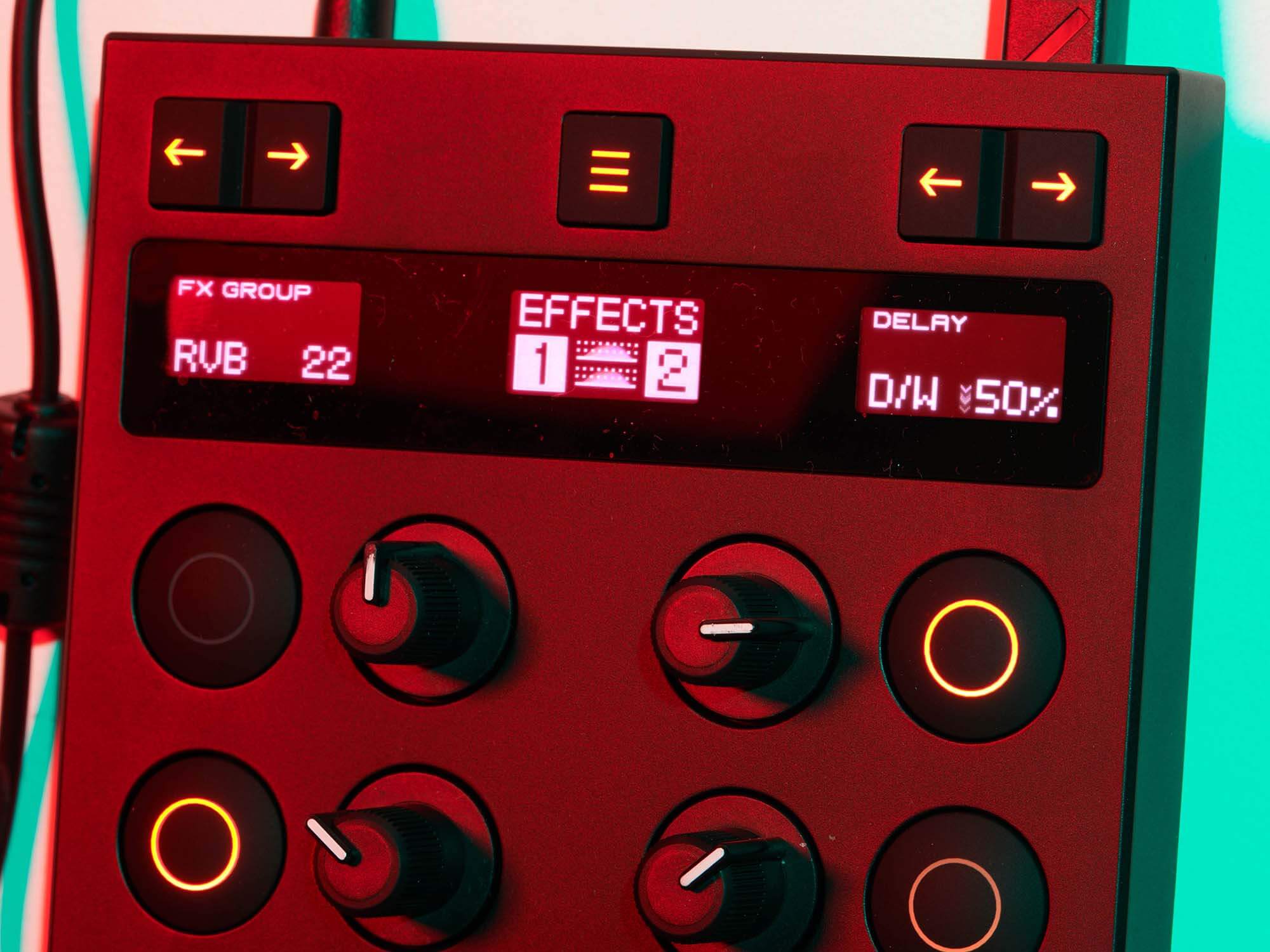
“But then we very quickly saw that electronic music DJs started using the controller and the mixer as their whole setup, mixing completely internally and then using two of those controllers so they had access to four decks and doing a bunch of remixing. And then we also saw a lot of people just coming into DJing and having an X1 as their very first controller. With this mixer mode, we wanted to make it even more interesting as a very first purchase. Because right now you could basically spend £299 and get the X1 with Traktor Pro 3 in the box as well. In theory, you can just switch it to mixer mode and then start mixing at home already. There’s nothing else that you need except a pair of headphones.”
What’s striking about both these new controllers is the extent to which NI is creating a more immersive experience for users and performers where they spend less time looking at the computer screen, even though that’s where the majority of the actual processing is going on. More screens on the X1, a much bigger screen on the Kontrol and an attempt to minimize what Michael calls “laptop face”, which you can probably picture. Chris too says that friends who are heavily into modular synths have been won over by the way the new Kontrol keyboards create the feeling of really controlling an instrument without needing lots of shift presses and navigation. And he believes polyphonic aftertouch will be a game changer when people get to use it.
The innovation doesn’t stop here. Both product leads stress that they watch the forums intently to gauge how users are responding to new paradigms and features, incorporating changes into software updates over time and ultimately in the longer term, using them to inform future products. We ask if either controller had to miss out on a particular feature for the usual reasons of cost or viability that inform any design, but both assure us that at version 3, they represent the peak of integration between software and hardware, with tweaks and additions sure to come over time as they gather even more feedback on how people are using them.
For now, however, NI’s controller lineup and ecosystem look stronger than ever, whatever kind of music you’re making.
Learn more at Native Instruments.